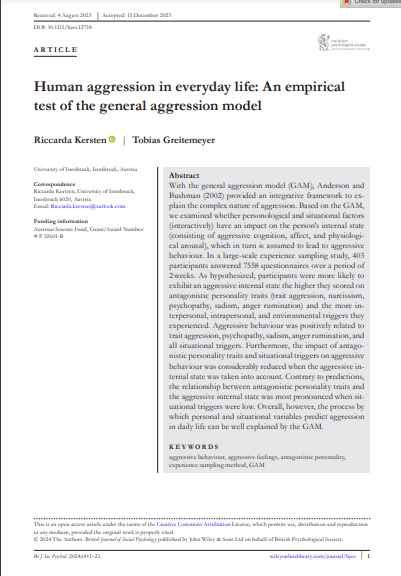Human aggression in everyday life: An empirical test of the general aggression model
By Riccarda Kersten, Tobias Greitemeyer
With the general aggression model (GAM), Anderson and Bushman (2002) provided an integrative framework to explain the complex nature of aggression. Based on the GAM, we examined whether personological and situational factors (interactively) have an impact on the person's internal state (consisting of aggressive cognition, affect, and physiological arousal), which in turn is assumed to lead to aggressive behaviour. In a large-scale experience sampling study, 403 participants answered 7558 questionnaires over a period of 2 weeks. As hypothesized, participants were more likely to exhibit an aggressive internal state the higher they scored on antagonistic personality traits (trait aggression, narcissism, psychopathy, sadism, anger rumination) and the more interpersonal, intrapersonal, and environmental triggers they experienced. Aggressive behaviour was positively related to trait aggression, psychopathy, sadism, anger rumination, and all situational triggers. Furthermore, the impact of antagonistic personality traits and situational triggers on aggressive behaviour was considerably reduced when the aggressive internal state was taken into account. Contrary to predictions, the relationship between antagonistic personality traits and the aggressive internal state was most pronounced when situational triggers were low. Overall, however, the process by which personal and situational variables predict aggression in daily life can be well explained by the GAM.
British Journal of Social Psychology Early View, 2024.


